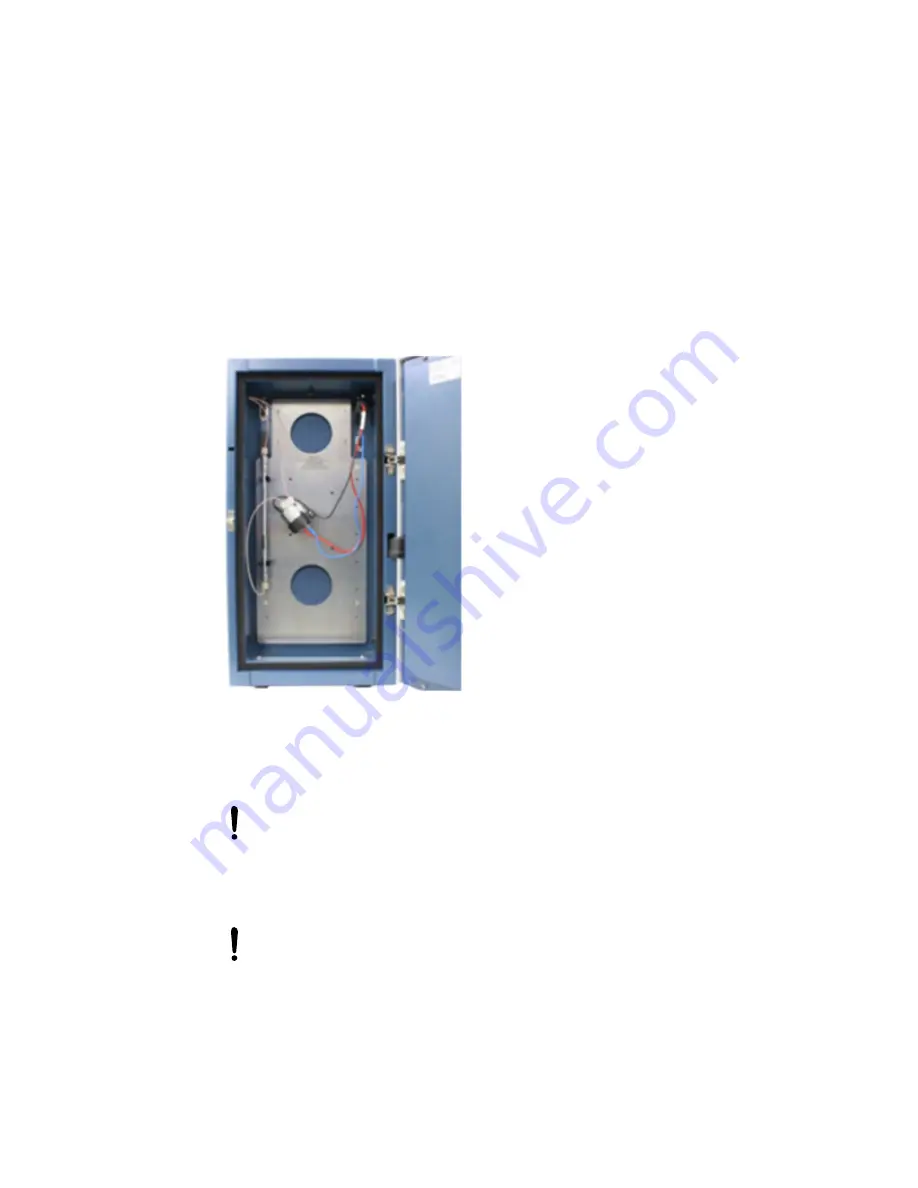
electrochemical detection (analysis of carbohydrates using anion-exchange chromatography with
NaOH as mobile phase). All gases except helium are removed completely. Helium is not EC
active and does not significantly change the mobile phase properties. To prevent mobile phase
contamination, use only high-purity helium.
2.7.3 Installation and startup
For a successful installation and startup, follow the next steps carefully:
1. See the Installation of flow cell and column in the 3465 Detector figure.
Figure 2–7: Installation of flow cell and column in the 3465 Detector
2. Before connecting the HPLC system to the detector, you should passivate all metal parts
with 30% phosphoric acid over 20 minutes. The acid is flushed through the pump, the
pump tubing, the dampener, and the injector (in load and inject positions), and then routed
to waste.
Notice:
Ensure that all parts that are not acid-resistant (such as nylon inlet
filters, column, and flow cell) are not connected during this step.
3. After flushing with the acid, you must thoroughly flush the system with HPLC-grade water.
Ensure that no traces of acid are left in the tubing or pulse dampener (confirm with pH
paper). Flush the system with HPLC buffer.
Notice:
If an ISAAC reference electrode is used, ensure that the mobile phase
contains at least 2 mmol/L chloride (KCl or NaCl) ions.
4. Before connecting a new column, read the manufacturer’s instructions. Thorough pre-
conditioning of a column is always required. Only a pre-conditioned column is
electrochemically clean. If not, the background current may be unacceptably high and
substantial fouling of the working electrode occurs. For reverse-phase columns, flushing
December 16, 2021, 715007395 Ver. 00
Page 35
















































